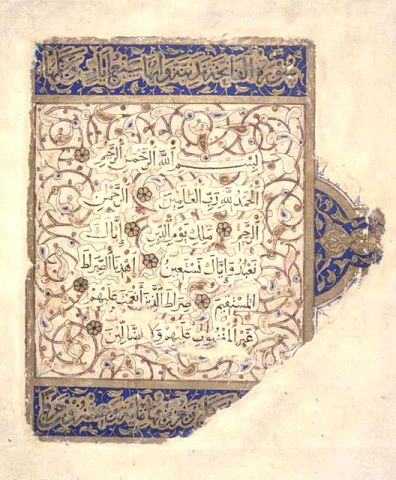Welcome Friends: Ahlan wa sahlan!
COMMENTS:
1. As to the explanation of verse 19, I like the initial part of Muhammad Asad’s translation, and Yusuf Ali’s later part. Addressed to the Faithful in general, it does not say ‘wives’ as Asad writes below, but ‘women’ as Yusuf Ali explains. The latter understood it however that women themselves should not be considered part of any inheritance as they are in some cultures, which is why I prefer Asad’s explanation. (Remember how we explained ‘faahisha?’ Here the ‘faahisha’ is ‘mubayyinah,’ or obvious.
Verse 20 continues, specifying here a spousal relationship that comes to an end with a man ‘replacing' one wife with another (literally: exchanging one wife in place of another), in which case he should not take any of what he had given her of gifts. Some might find the word ‘replace’ offensive, but it does go to show that to marry someone else, a man is giving up the wife he already has so as to take another in her stead!
Verse 21 is very important in that it mentions the Solemn ‘Covenant’ (ميثاقاً غليظاً) that Marriage is, an institution sanctified by God and not to be taken lightly. (Read ‘The Marriage Union: Sanctity and Fulfillment’ on sidebar.)
2. Verse 22 tells us of a ‘faahisha’ and an odious practice which took place before Revelation, when men used to marry the wives of their own fathers. This is not to be done from now on, but is a matter of the past if done prior to Revelation or conversion.
Verse 23 lists the women who are ‘hurrima’ made prohibited to Faithful men in marriage, mentioning birth-mothers, daughters, sisters, aunts, nieces, nursing-mothers and their daughters who, in fact, become one’s sisters, mothers-in-law, daughters of women with whom one has consummated a marriage, and daughters-in-law married to one’s sons. The verse finally mentions the combining of two women who happen to be sisters (being married to them both at the same time), saying that if such a combination had already been done, it is a matter of the past if prior to Revelation or conversion, and God is Forgiving, Most Compassionate.
3. Verse 24 mentions that all married women ‘muhsanaat’ (are also forbidden to Faithful men) except those in their tenure (Asad: those whom you rightfully possess through wedlock). I think this could also be referring to the mothers of the orphans who come as an addition to your household (see Posting Feb 4th). Here their dower is a considered a ‘fareedha’ (for definition see last posting). It is interesting to note that ‘muhsanah’ is a woman literally ‘fortified,’ either by her own chastity and self-determination (freedom) combined, or by being in wed-lock. In this verse it is taken to mean that she is fortified by marriage, and in the next verse she is ‘fortified’ by her own freedom, ie self-fortified!
4. Verse 25 mentions that those who cannot afford to marry from the ‘muhsanaat’ self-fortified free women, could approach marriage with Believing maidens who belong to someone, as long as they do it with the permission of the girls’ families, NOT in fornication or in secret. During times of slavery, an unmarried slave-girl was contrary to a ‘muhsanah.’ The interesting point of this verse is that if such ‘non-fortified’ girls become wives and commit a ‘faahisha,’ here meaning ‘adultery,’ they would get half the suffering of ‘self-fortified’ free wives. Read M. Asad’s notes 30-34.
5. Verse 26 begins by telling us God’s purpose in sending us all these verses:
Yusuf Ali:
“God does wish to make clear to you and to show you the ordinances of those before you and He does wish to turn to you (in Mercy) and God is All-Knowing, Wise.”
Muhammad Asad’s note 35 tells us: “This is an allusion to the genuine religious teachings of the past, which aimed at bringing about a harmony between man’s physical nature and the demands of his spirit…”
Enough said!
Tomorrow’s Reading is from HQ4:27-37.
Peace unto all!
معجم المقاييس: حصن: كلّ امرأةٍ عفيفة فهي مُحْصَنة ومُحْصِنة، وكل امرأة متزوِّجةٍ فهي محصَنة لا غير. قال: ويقال لكلِّ ممنوعٍ مُحْصَن، وذكر ناسٌ أنّ القُفْل يسمَّى مُحْصَناً. ويقال أحْصَنَ الرّجُل فهو مُحْصَنٌ.
لسان العرب: حصن: كلّ امرأةٍ عفيفة فهي مُحْصَنة ومُحْصِنة، وكل امرأة متزوِّجةٍ فهي محصَنة لا غير. قال: ويقال لكلِّ ممنوعٍ مُحْصَن، وذكر ناسٌ أنّ القُفْل يسمَّى مُحْصَناً. ويقال أحْصَنَ الرّجُل فهو مُحْصَنٌ.
.jpg)
3 comments:
I feel that I misunderstood the reading, it is confusing. The exception is for the mothers of the orphans because they are already married to the man in question then, is that right? Please comment.
Note 3 gives explanation of 'muhsanaat' as married women, and then further on in note 4, it seems to be explained as 'self-fortified free women' that men can marry from. Am I missunderstanding something?
My confusion over the term 'muhsanaat' has been cleared after a careful reading of the second part of note 3. Sorry!
Post a Comment